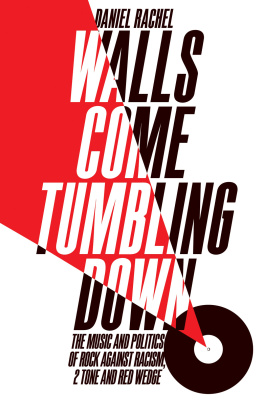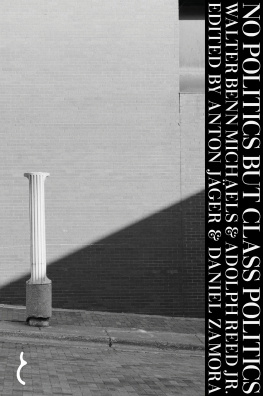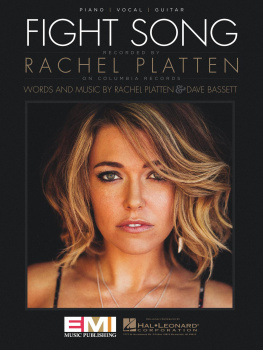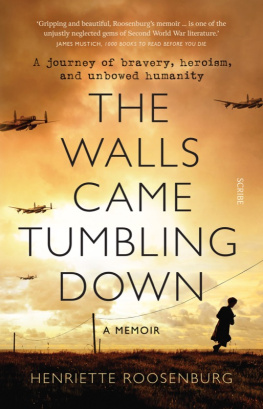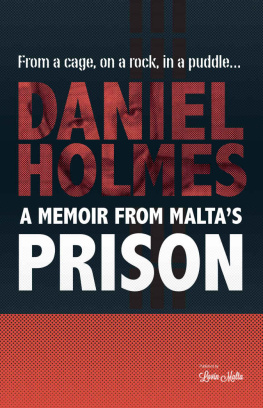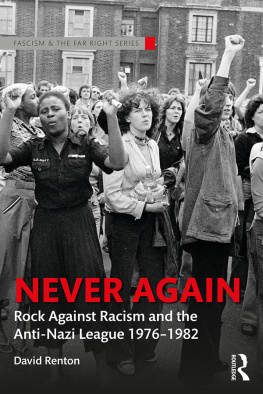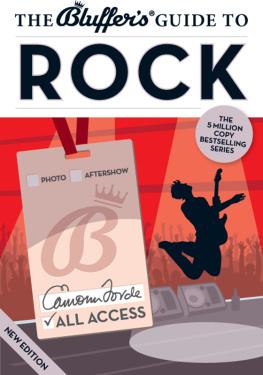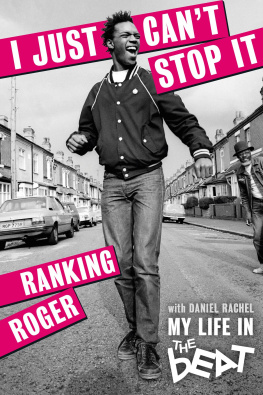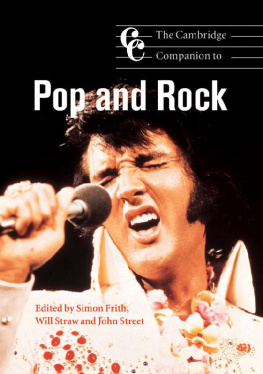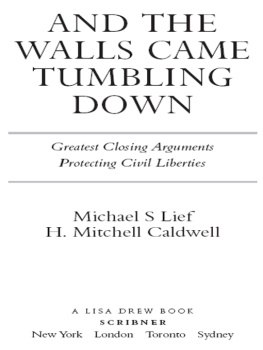Daniel Rachel - Walls Come Tumbling Down: The Music and Politics of Rock Against Racism, 2 Tone and Red Wedge
Here you can read online Daniel Rachel - Walls Come Tumbling Down: The Music and Politics of Rock Against Racism, 2 Tone and Red Wedge full text of the book (entire story) in english for free. Download pdf and epub, get meaning, cover and reviews about this ebook. year: 2016, publisher: Pan Macmillan, genre: Politics. Description of the work, (preface) as well as reviews are available. Best literature library LitArk.com created for fans of good reading and offers a wide selection of genres:
Romance novel
Science fiction
Adventure
Detective
Science
History
Home and family
Prose
Art
Politics
Computer
Non-fiction
Religion
Business
Children
Humor
Choose a favorite category and find really read worthwhile books. Enjoy immersion in the world of imagination, feel the emotions of the characters or learn something new for yourself, make an fascinating discovery.
- Book:Walls Come Tumbling Down: The Music and Politics of Rock Against Racism, 2 Tone and Red Wedge
- Author:
- Publisher:Pan Macmillan
- Genre:
- Year:2016
- Rating:4 / 5
- Favourites:Add to favourites
- Your mark:
- 80
- 1
- 2
- 3
- 4
- 5
Walls Come Tumbling Down: The Music and Politics of Rock Against Racism, 2 Tone and Red Wedge: summary, description and annotation
We offer to read an annotation, description, summary or preface (depends on what the author of the book "Walls Come Tumbling Down: The Music and Politics of Rock Against Racism, 2 Tone and Red Wedge" wrote himself). If you haven't found the necessary information about the book — write in the comments, we will try to find it.
Daniel Rachel: author's other books
Who wrote Walls Come Tumbling Down: The Music and Politics of Rock Against Racism, 2 Tone and Red Wedge? Find out the surname, the name of the author of the book and a list of all author's works by series.
Walls Come Tumbling Down: The Music and Politics of Rock Against Racism, 2 Tone and Red Wedge — read online for free the complete book (whole text) full work
Below is the text of the book, divided by pages. System saving the place of the last page read, allows you to conveniently read the book "Walls Come Tumbling Down: The Music and Politics of Rock Against Racism, 2 Tone and Red Wedge" online for free, without having to search again every time where you left off. Put a bookmark, and you can go to the page where you finished reading at any time.
Font size:
Interval:
Bookmark:
Daniel Rachel
WALLS COME
TUMBLING DOWN
The music and politics of
Rock Against Racism, 2 Tone and Red Wedge
19761992
PICADOR
Dedicated to Allan Bowen,
tutor at Solihull VI Form College,
who validated the link between music,
politics and the ideological struggle.
And it shall come to pass, that when they make a long blast with the rams horn, and when ye hear the sound of the trumpet, all the people shall shout with a great shout; and the wall of the city shall fall down flat, and the people shall ascend up every man straight before him.
Joshua 6:5
Are you gonna try to make this work
Or spend your days down in the dirt
You see things CAN change
YES an walls can come tumbling down!
Paul Weller
BOOK ONE: ROCK AGAINST RACISM
BOOK TWO: 2 TONE
BOOK THREE: RED WEDGE
INNER PRINTING
Temporary Hoarding front covers. RAR/ Temporary Hoarding Collective
Well Red front covers: #1 The Fish Family (Neil Dell & Mark Goddard); #2 Paul Shorrock; #3 Chris Priestley; #4 Richard Parent; #5 Caroline della Porta; #6 Ashley Potter; #7 Willie Ryan; #8 Cat Santos; #9 David Lyttleton; #10 Caron Malcolm. Red Wedge
On 5 August 1976, on stage at the Birmingham Odeon, a drunk Eric Clapton harangued an audience of 2,000 rock fans. He called for fucking wogs and Pakis not just to leave the hall, but to leave the country, before speaking in favour of the Conservative MP Enoch Powell, who eight years earlier had made his inflammatory Rivers of Blood speech, predicting, In fifteen or twenty years time the black man will have the whip hand over the white man. Perhaps it was a coincidence that Powells address had been made in the Midland Hotel across the street from the Odeon but Clapton had no hesitation in echoing the former cabinet ministers language, warning fans that the country was in danger of becoming a black colony within ten years. Claptons seven-piece band included the mixed-race Honolulu-born backing vocalist Yvonne Elliman and the percussionist Sergio Pastora Rodriguez, who were joined onstage by the evenings special guest Van Morrison to perform Little Willie Littlefields R&B classic Kansas City. Birmingham was a multiracial city and, understandably, there was shock amongst the crowd. Clapton was not only an internationally renowned rock star, but, more astonishingly, one who had forged his musical identity through the blues: the music of the black man. His outburst, when reported, provoked indignation and was to become the starting point of a sixteen-year period in which music and politics would combine with unprecedented force and energy. A letter of response, written by Red Saunders a cultural activist and freelance photographer for the Sunday Times during a rehearsal with his left-wing agitprop theatre group, Kartoon Klowns, was published in all the national music papers. It called for a rank and file movement against the racist poison in rock music, and signed off with a PO Box address. The response was immediate. More than 200 letters of support were received within a week and Rock Against Racism was born.
Over the next five years, Rock Against Racism developed into a national campaign, later spawning groups across Europe and as far away as the United States of America. Its inaugural gig at the Princess Alice pub in the East End of London in October 1976, headlined by the blues singer Carol Grimes, took place less than five miles from where Oswald Mosley and the British Union of Fascists had marched and been confronted by anti-fascist demonstrators in the Battle of Cable Street forty years earlier. History was central to the ethos of Rock Against Racism and its resolve to fight prejudice in music, especially as it had identified an increase in right-wing political sympathizers in the younger generation. Support for the National Front strengthened alarmingly throughout the seventies, and, with candidates pledging to Keep Britain White, they polled progressively higher at both local and national elections. The music world responded. Johnny Rotten of the Sex Pistols sang of the poison in the machine, the Clash cried White Riot, and the Cimarons and Steel Pulse, and China Street, black and white reggae bands respectively, recorded tracks called Rock Against Racism.
In an atmosphere of mounting racial tension, the Anti-Nazi League was established in 1977, immediately forming an association with Rock Against Racism. Combining the Anti-Nazi Leagues political focus to defeat the National Front electorally with Rock Against Racisms drive to crush fascism through music and culture, this alliance had a pronounced influence on young people, culminating in the great Victoria Park Carnival of 30 April 1978. An estimated 80,000 people marched the seven miles from Trafalgar Square to Hackney to make a stand against racism and to be entertained by an array of bands including X-Ray Spex, the Clash, and Steel Pulse. The event showed that an unconventional grass-roots organization, in little over eighteen months, had attained nationwide recognition, generating front-page headlines and lead coverage in the national news. Yet behind the scenes, Rock Against Racism was made up of a relatively small circle of people, many of them coming from backgrounds shaped by the counterculture movements of the fifties and sixties. Their varied influences and experiences were crucial to Rock Against Racisms thinking and informed the content of RARs propaganda periodical, Temporary Hoarding. The magazine, designed with a mixture of eye-catching graphics influenced by the punk Do It Yourself cut-and-paste style and pre-war montage techniques, addressed not only the threat of the National Front but also broader issues such as British troops in Northern Ireland and international concerns in Zimbabwe and South Africa.
The emergence of punk rock and British reggae in the mid-to-late seventies was vitally important to the success of Rock Against Racism. Through music, and through a general sense of disenfranchisement, both first-generation black British and disaffected white youth often educated in integrated schools and socializing in the same pubs and clubs began to recognize common grievances. It could be heard in Cultures prophetic Two Sevens Clash, Bob Marleys Punky Reggae Party and the Clashs (White Man) In Hammersmith Palais. And gradually, despite the very different rhythms of punk and reggae, there emerged a mutual platform of tolerance and acceptance shaped by issues of class, race and, to a lesser degree, gender and sexual identity struggles, exemplified by the Tom Robinson Band anthem (Sing If Youre) Glad To Be Gay.
Under Rock Against Racisms banner of Black and White Unite and Fight and the Anti-Nazi League slogan Stamp on a Nazi, there followed a period of mass demonstrations, riots, concerts and anti-fascist carnivals in protest against increasingly frequent and violent attacks on black and Asian communities. Walls Come Tumbling Down documents these battles and argues that politics was at the heart of pop music for the first time in British musical history. The phenomenon culminated at the end of the eighties in a global television audience of 600,000,000 across sixty-seven countries watching a spectacular eleven-hour concert at Wembley Stadium demanding the release from prison of Nelson Mandela. In response, the final chapter of Walls Come Tumbling Down deals with the formation of Artists Against Apartheid and the events that led to that monumental concert. In doing so, it provides an uplifting conclusion to the cultural fight against racism that was first triggered by Eric Claptons deplorable comments a decade earlier.
Next pageFont size:
Interval:
Bookmark:
Similar books «Walls Come Tumbling Down: The Music and Politics of Rock Against Racism, 2 Tone and Red Wedge»
Look at similar books to Walls Come Tumbling Down: The Music and Politics of Rock Against Racism, 2 Tone and Red Wedge. We have selected literature similar in name and meaning in the hope of providing readers with more options to find new, interesting, not yet read works.
Discussion, reviews of the book Walls Come Tumbling Down: The Music and Politics of Rock Against Racism, 2 Tone and Red Wedge and just readers' own opinions. Leave your comments, write what you think about the work, its meaning or the main characters. Specify what exactly you liked and what you didn't like, and why you think so.

